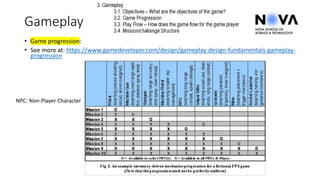This document provides an overview of key aspects of game design for a class project. It discusses gameplay elements like objectives, progression, and mechanics. It also covers structural roles in game development such as game designer, art designer, and level designer. The document aims to help students understand the process of designing a game and provides examples and resources to support building a game design document.


















































